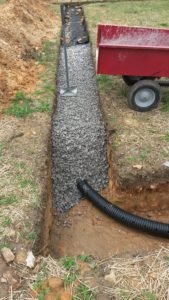
Drainage gravel
All the guides I have read about building drainage trenches have all said to use drainage rock or gravel as filler. There are other options available on the market, such as a plastic matrix media, but using rock chips or rounded river rock appears to be the most common solution.
But how much space does that rock take up? How much volume of water would I lose?
To determine this, I setup an experiment in my backyard.
Supplies Needed:
- Empty 1-gallon milk jug (3.78 Liter or 3,780 mL)
- 3/8” to 5/8” rounded gravel (same gravel to be used for drainage)
- Measuring cup
- Water
Step 1 – Fill Jug with Gravel
Our backyard has a ton of gravel in it, for walkways and paths and such, so I easily had enough to spare for this project. Honestly, it took a while to fill the jug, but all for the sake of science… right?
Note, the weight of an empty jug is negligible, but full of gravel it weighs 14.2 lbs. We’ll keep this in mind for later.
Step 2 – Fill Jug with Water
Took the jug to the sink and filled it with water. The water percolates into all the nooks and crannies in the container, the same way water does in a trench full of gravel and around a drainage pipe. You can see the water level in the jug.
Once the jug is full of water it was ready for testing.
Step 3 – Pour Out Water into Measuring Cup
By slowly pouring out the water into the measuring cup – ensuring no rocks tumbled out – I filled the measuring cup up to the line. After each fill, I took a picture of the cup, dumped the water in the garden and refilled it again. I got two full, 500 mL pours out of the jug.
For the bottom of the jug, I put my fingers over the opening so that the rocks wouldn’t come tumbling out of the opening.
Step 4 – Add Up Measured Water
Adding the contents of the three measuring cups produces 1,275 mL of water.
500 mL + 500 mL + 275 mL = 1,275 mL of water
Results
Jug capacity =
3,780 mL
Displaced water =
1,275 mL
Percentage of water in jug =
1,275 mL / 3,780 mL = 33.73%
Summary
Using a mix of 3/8” to 5/8” rounded gravel takes up 66% of the space in a 1 gallon container.
If I had a 300 gallon tank full of this gravel, I would only be able to put 90 gallons of water in it. In the same line of thought, 300 gallons of rock would also weigh 4,260 pounds.
Different types of gravel would yield different results as would compaction rates and whether the rock is rounded or jagged. Also, this rock is clean and contained very little dirt. These are all topics to think about when buying drainage gravel with the intended use of putting it in a drainage trench.

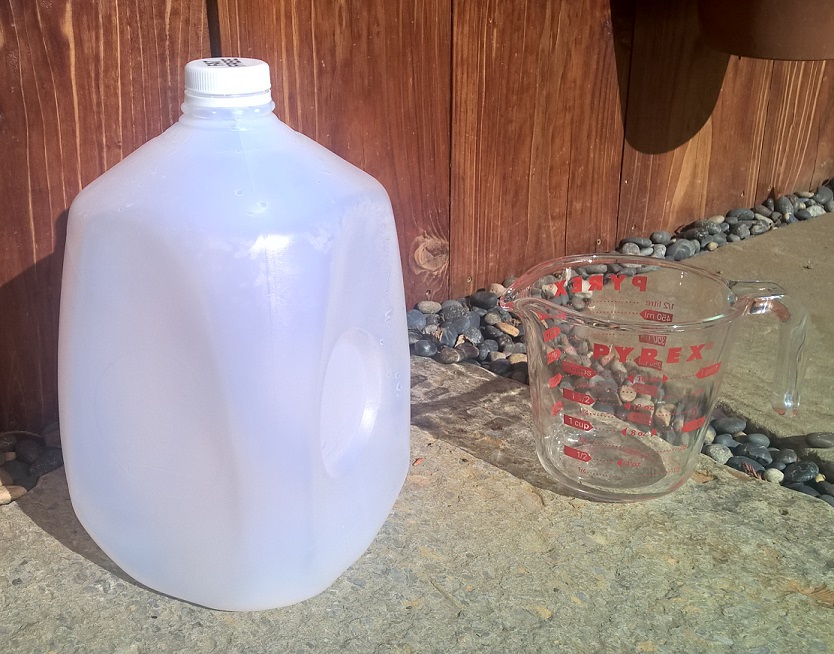
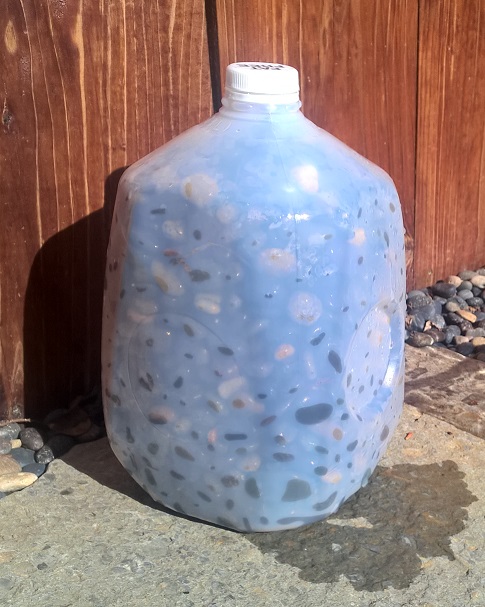
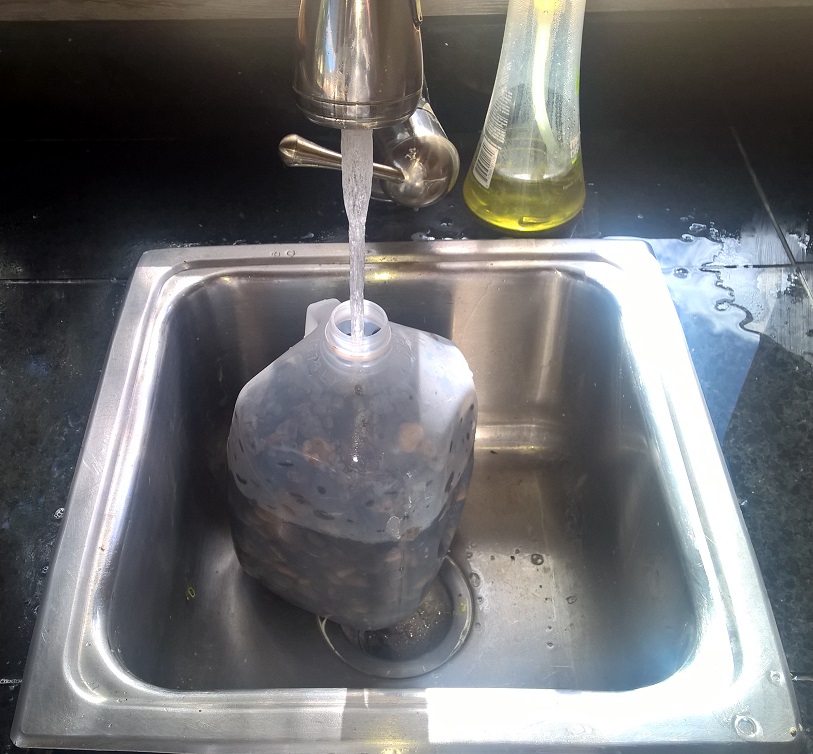
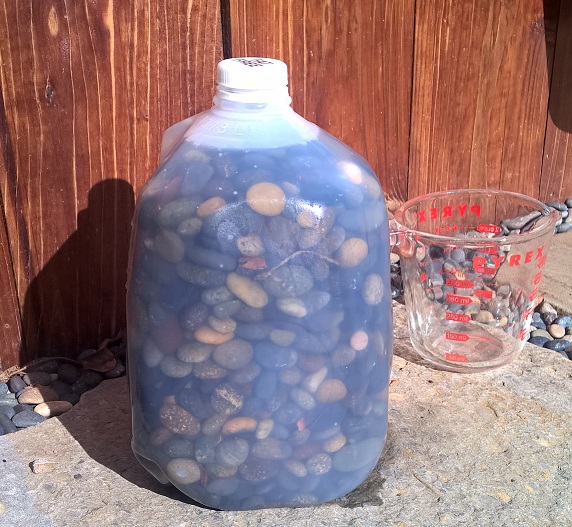
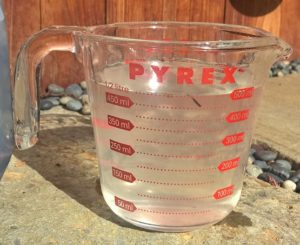
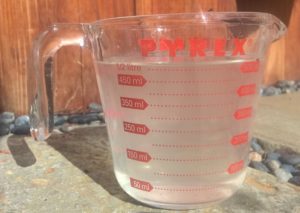
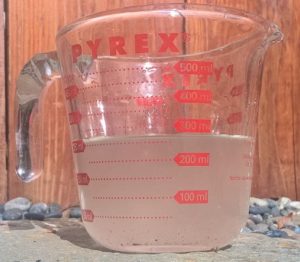
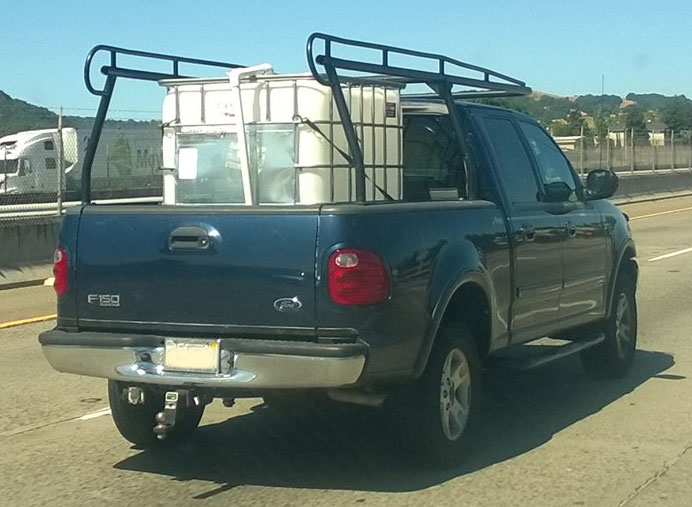
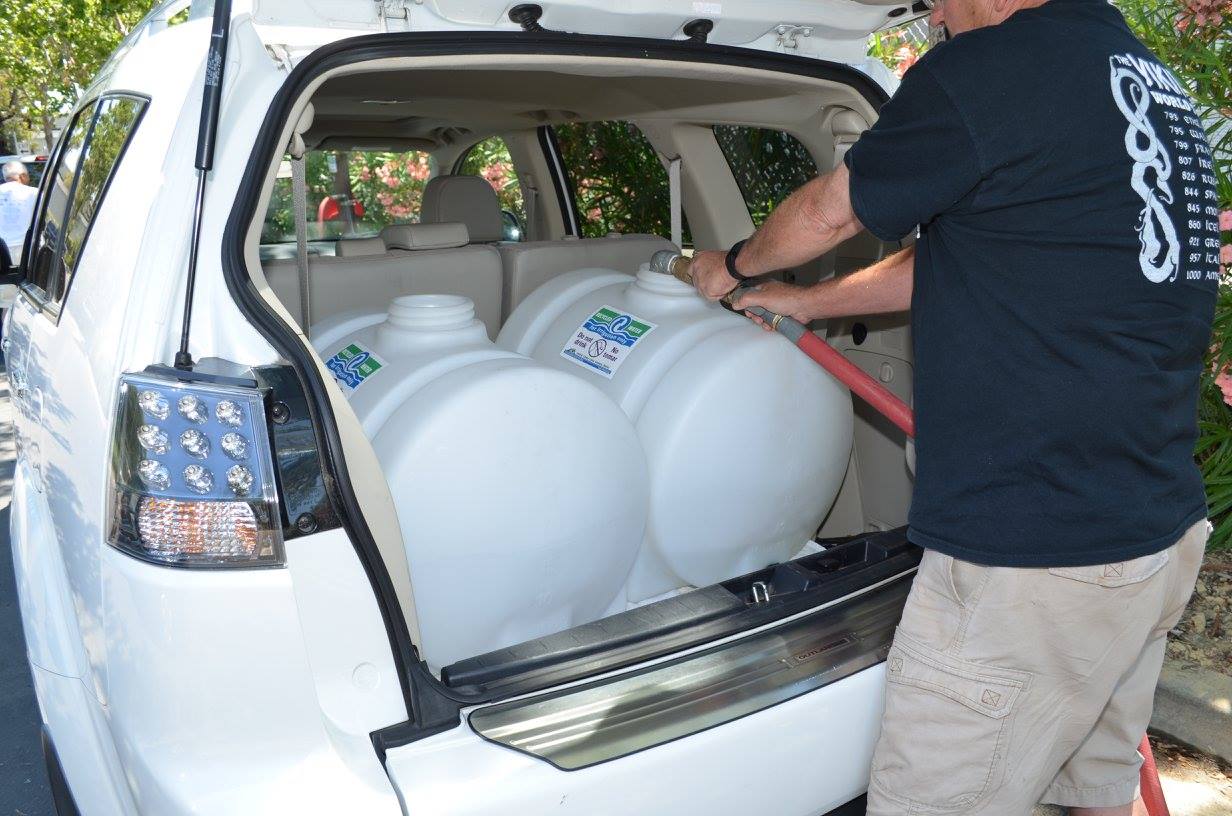
Thank You! Very useful to determine the size of a french drain that may be needed if you have a good idea of the amount of water you expect to be collecting. It would also be helpful to know how different size gravel or washed rock compare.